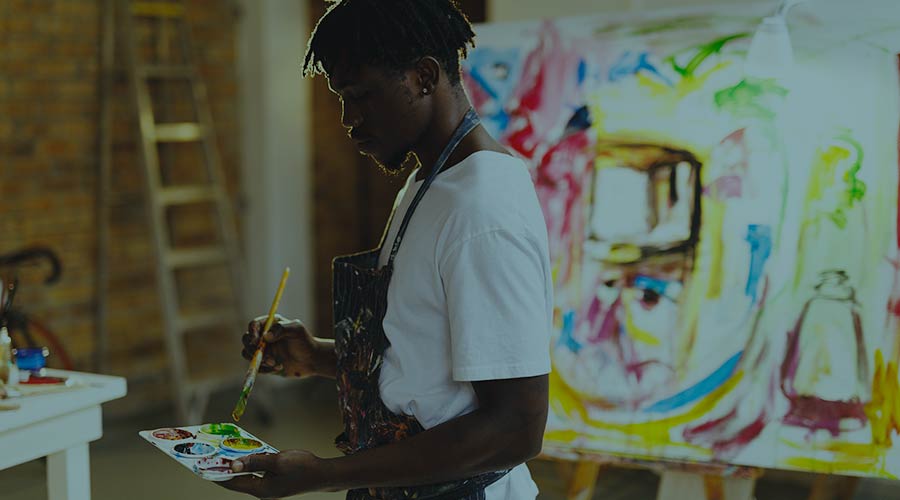History allows us to take an honest look at our society and see more clearly the work that remains toward a more just and equal future. However, not all hindsight is 20/20. A recent study conducted by CBS News found that Black history is taught differently in every state in the country. The study pointed out that there is no standard curriculum for teaching children about the Civil Rights Movement, slavery, the Harlem Renaissance and more, and as a result important pieces of Black history and culture are too often left out of history and social studies classes.
Museums as a Mirror of Society
Museums often serve as an intersection between pop culture and history, allowing visitors to see the impact each has had on the other. However, a recent study by the National Center for Biotechnology Information found that 85% of museum artists were white and that the works and stories presented in museums do not reflect the makeup of the country; museum exhibits often overlook the stories of the many Americans of color. Improving representation in museums can not only help increase the visibility of Black history and artists, but it can also help educate society about diversity.
Not every historic space comes in the quiet halls of a typical museum, however. History can also be seen in spaces that are time capsules that capture “real life” in ways we cannot perceive in books or photos. Preserving these unique and ephemeral aspects of American history, and specifically those pertaining to Black culture and history is important to entrepreneur and philanthropist, Robert F. Smith. In 2019, the Fund II Foundation, of which Smith is the founding director and President, donated to the National Parks Service to preserve Dr. Martin Luther King Jr.’s childhood homes. A few months before the donation, Smith reflected on the importance of preserving the unique stories that are pivotal to understanding the full scope of Black history. About the value of his mission to preserve those spaces, Smith said, “I think a big part of [my] mission is to educate the world as to what African Americans have contributed in America and educate Americans as to what our contributions have led to and so many great things that make America the unique place it is on the planet.”
Let’s Lift Everyone’s Voice
Working to combat these cases of underrepresentation, more museums have opened exhibits to highlight Black culture. For example, the Carver Museum in Austin, Texas recently opened to show the impact the Black community had on Texas in the 19th century. Previously, the museum showed an exhibit on Juneteenth, the holiday celebrating the end of slavery in the United States. Similarly, the African American History Museum of Philadelphia offers a permanent exhibit focusing on the contributions of Black Americans from 1776 to 1876, working to show the important role that African American people played in shaping the country, but they also have current work up exploring the face of youth activism during the Civil Rights era in the city, and the work of Black designers. In D.C., the Smithsonian has obtained and will showcase over 275 pieces of work from America’s first Black photo studios, which capture not only images of and taken by Black Americans during the turn of the 19th Century, but also the faces of key abolitionists and members of the Underground Railroad. The importance of this chance collection comes not only from their age (some date back to the 1840s) but also their value as historical artifacts that have surpassed in number the collection of delicate daguerreotypes of African Americans held by the Library of Congress.
But preservation isn’t in just what we can see and touch, but also what we can hear. Working to help build Black visibility in museums, the Fund II Foundation provided a grant to the Louis Armstrong House Museum in 2016 in order to create a digital archive that would offer a direct portal into Louis Armstrong’s daily life and continue his mission to preserve African American history. The digitization was finalized in 2018, and enables people across the globe to enjoy Armstrong’s music and learn more about his life.
It’s efforts such as these, to hold up to the light aspects of our history that would otherwise be lost, that can be so vital to understanding who we are as a people, and the contributions of people we so admire.
Learn more about the work to support the Louis Armstrong House Museum.






